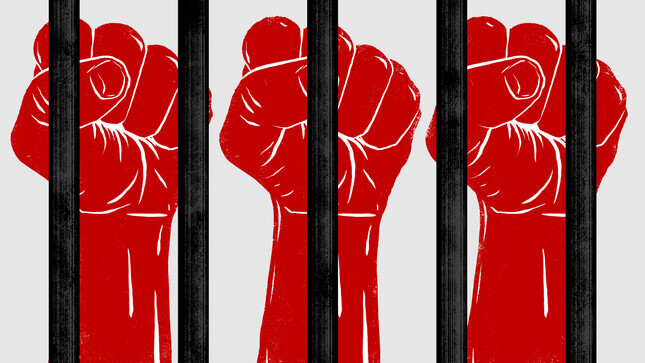America's Prisoners Are Striking for Their Lives
Latest

I won’t ever forget the photo of the minutes-old murder a prisoner at Lee Correctional Institution in South Carolina sent me. It wasn’t a high-quality picture. But I could clearly see the blood, which covered the white clothes of a bearded inmate looking in the direction of the camera. I could see the desperation in his eyes.
The murder occurred in a prison where one of my youngest brothers, James McDaniel, was more than a decade into a 16-year-sentence for his role in an attempted armed robbery of a fellow drug dealer that ended in the death of one of the potential assailants. My mind reflexively jogs to that image every time I think about what prisoners throughout the country will be attempting to do beginning today, when they launch a national prison work strike organized by the Incarcerated Workers Organizing Committee.
They want to finally be heard, both by a public which has long ignored them and by correctional officials and elected leaders who seem unbothered that they have been forced to live an inhumane existence.
The first of the prisoners’ 10 demands is simple: Immediate improvements to the conditions of prisons and prison policies that recognize the humanity of imprisoned men and women.Their other demands are important as well. They include a decent wage for the work they do; a restoration of Pell grants; better funding for rehabilitation services; better ways to air legal grievances; and an end to sentences without the possibility of parole, among other reforms.
But those goals won’t mean much if the first one isn’t met. Without “immediate improvements,” some prisoners won’t even live to benefit from any fruit that comes of the strike. Others may end up psychically and emotionally scarred beyond recognition even if they physically survive.
Prisoners are trying to raise awareness with a nationwide strike because all their other attempts have fallen on deaf ears.
That’s not hyperbole. Rape is an ever-present threat in prison. (It’s estimated that more than 200,000 men are raped behind bars every year.) The last time I visited a prison in South Carolina several months ago, anti-rape posters were plastered throughout the visiting area.
Violence is another constant. Earlier this year, the deadliest prison riot in recent memory happened at Lee Correctional—the place where James is trying to survive, and that my oldest brother Moochie had to navigate before being released after 32 years. Seven prisoners were killed in the riots; several others were severely injured.
Before that event, James had been telling me that something awful was brewing because of the conditions inside those bars. People had to fight off rat and roach infestations. They were locked in their cells for longer periods of times every day, with fewer breaks. Even their right to shower was curtailed because of cutbacks in prison personnel. There were fewer guards to supervise the seemingly mundane and routine tasks that allow men behind bars to feel fully human.
The incentive for prisoners to join gangs increased as the number of guards on duty began dropping. It was one way they felt they could keep themselves safe, because they knew if they ran into trouble, in was unlikely a guard would show up on time to stop the attack. That’s precisely what James said happened to the man in that photo I’ll never forget.
The dead prisoner in the photo had supposedly violated a gang code against the use of hard drugs. He had been using something called “ice molly,” and other such things that frequently got smuggled inside. He had barricaded himself in his cell after getting high on the drugs.
“They got tired of waiting on him to come out, so 10 of them kept beating on the door until they got in the room,” James told me. “It’s a little Asian dude smaller than me, so about 15 of them ran into the room and started stabbing him…they stabbed him out of fear.”
James has also seen drug overdoses and suicides as prisoners respond to what they have increasingly begun calling “a death trap” of an existence.
“This white dude was telling his counselors he was going to kill himself, but they didn’t believe him,” James told me. “The next day, he stood on the top rock by the TVs and jumped head first into the concrete.”
That’s why prisoners are trying to raise awareness with a nationwide strike, because all their other attempts have fallen on deaf ears. They are literally striking for their lives.
For many Americans, awfulness being visited upon people who have done awful things to others represents just desserts. They did the crime, so they must do the time. They have no right to our empathy or sympathy.
Not only are such sentiments cruel, they are short-sighted. We routinely provide second chances to the wealthy and powerful. Leaving redemption’s door open to those who messed up while trying to navigate a life full of challenge would be one of the most effective ways to ensure equality.
There is a more practical reason to advocate for the more humane treatment of prisoners. Most of them will be released one day. It would be better for society–for us all–if they come out healthier and stronger than they went in.
Issac Bailey is a 2014 Harvard University Nieman Fellow and the author of the new book My Brother Moochie: Reclaiming Dignity in the Face of Crime, Poverty and Racism in the American South, which explores the criminal justice system’s affect on poverty-stricken black families.